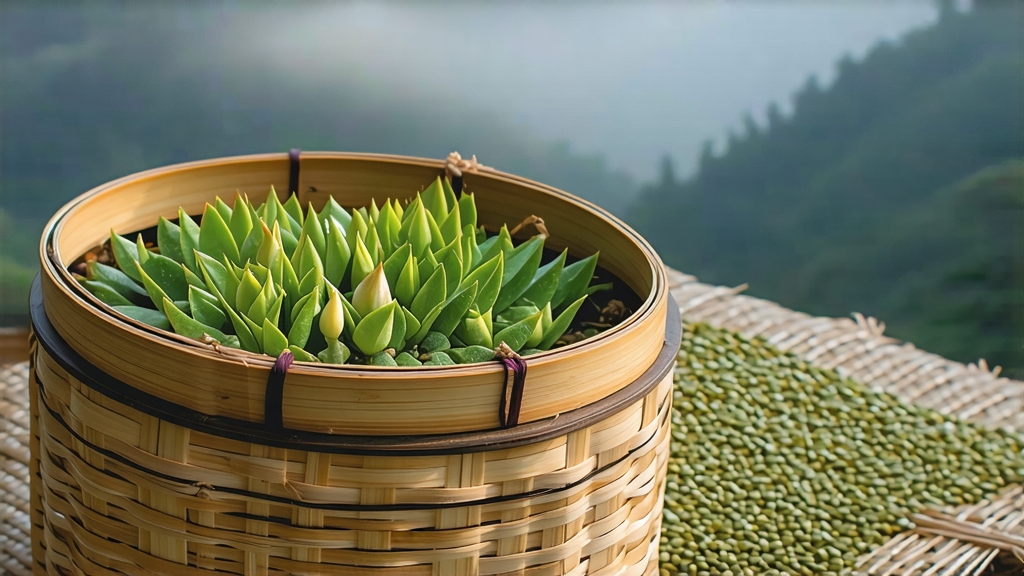
Hidden above the perpetual cloud belt of Sichuan Province, the Meng Ding range has been sending spring water and fragrant tea to Chinese emperors since the Tang dynasty. Among the gifts carried down the narrow plank roads, none was more coveted than Meng Ding Huang Ya, the “Yellow Bud from the Summit.” Today this micro-lot yellow tea accounts for barely 0.2 % of China’s total tea output, yet it remains the benchmark against which all other yellow teas are judged. To understand why, one must follow the bud from myth-shrouded garden to gaiwan, tracing a process that turns simple leaf into liquid topaz.
Legend places the first planting in 53 BCE, when the Daoist cultivar Wu Lizhen transplanted wild tea trees onto the five peaks of Meng Ding. By the Tang (618-907 CE) the monastery tea was already taxed in kind; Song (960-1279) records list it among the “Ten Famous Teas” presented at court. The name “Huang Ya” first appears in 1561, in the Sichuan Gazetteer, noting that monks allowed the leaves to “sweat in cloth for one night, turning the green to golden.” Imperial favor peaked under the Kangxi Emperor, who in 1704 exempted the monastery from land tax in exchange for 300 jin (150 kg) of the bud tea each spring. Carried by fast horses along the post-roads, the tea reached Beijing in twenty days, still fragrant with mountain mist.
Meng Ding Huang Ya is not a single clone but a cluster of local seed-grown bushes dominated by the small-leaf “Meng Ding #9” landrace. Growing between 800 m and 1400 m, the plants endure 180 fog-bound days a year; the cool, diffracted light forces slow amino-acid synthesis, yielding leaves exceptionally rich in L-theanine. Only the spring “ming qian” bud—plucked before the Qingming festival when the shoot is still shorter than 2.5 cm—is tender enough for the yellowing process. One kilogram of finished tea demands roughly 72,000 buds, all picked before sunrise to keep cell turgor high and grassy notes low.
The craft sequence follows the classical “men huang” (sealed yellowing) protocol, but Meng Ding monks added two mountain-specific steps that make the style unmistakable:
-
Zhu Lan Wei Diao (bamboo-basket micro-withering): After picking, buds are laid one layer deep in oval bamboo trays and rested for 90 minutes in a shaded corridor where mountain breeze lowers leaf temperature to 18 °C. This gentle dehydration reduces grassy volatiles by 30 % without oxidizing catechins.
-
Sha Qing (kill-green) at 140 °C: A 40-second tumble in a shallow, dragon-claw wok deactivates 85 % of polyphenol oxidase while preserving 12 % residual activity—critical for the later yellowing step. The master judges doneness by ear: when the crackle of escaping vapor shifts from soprano to alto, the leaf is ready.
-
Re Reun (hot-wrap rolling): Leaves are immediately wrapped in a double-layer of hemp cloth and rolled for 8 minutes; the retained heat softens cell walls, allowing free amino acids to migrate to the surface, setting up the sweet “chestnut” note.
-
Chu Men (first sealing): Bundles are stacked inside a cedar box lined with wet parchment and left for 24 h at 28 °C and 75 % RH. During this anaerobic rest, residual enzymes convert chlorophyllides into pheophorbide, turning the leaf olive-yellow and creating the precursor for the honeyed aroma.
-
Hong Bei (bamboo-charcoal baking): Bundles are opened and the leaf is given a 70 °C bake over embers of local purple bamboo charcoal for 12 minutes; the smokeless heat fixes the golden color and adds a whisper of resinous incense.
-
Fu Men (second sealing): The half-dry leaf is re-wrapped and rested another 18 h. Masters judge readiness by sniffing the neck of the bundle: when the aroma shifts from fresh corn to warm apricot, the yellowing is complete.
-
Zu Huo (足火, final firing): A slow 50 °C bake reduces moisture to 5 %, curling the bud into its signature sparrow-tongue shape. The entire cycle spans 72 hours, three times longer than green-tea processing, explaining both the rarity and the price